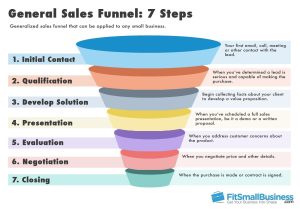
Storytelling to Connect with Customers
In the world of technology where products and services constantly evolve, it’s essential for businesses to establish meaningful connections with their customers. Storytelling presents a powerful tool to engage and communicate with your target audience in an impactful way. By harnessing the art of storytelling, you can create narratives that captivate your customers and build lasting relationships, enabling your brand to stand out in the competitive tech niche.
1. Understanding the Power of Storytelling
Storytelling offers a unique approach to sharing information by connecting with people on an emotional level. As humans, we are naturally drawn to stories as they evoke emotions, memories, and personal experiences. By crafting a compelling narrative, businesses can create a sense of familiarity and trust, establishing a strong bond with customers.
2. Identifying Your Brand’s Story
Begin by identifying the core values, mission, and vision of your brand. These elements form the foundation of your story. Consider the journey that led to the development of your tech product or service. Highlight the challenges faced, the solutions provided, and the impact it has on the lives of your customers. Humanize your brand to make it relatable and show how it makes a positive difference.
3. Knowing Your Target Audience
To effectively connect with your customers, understanding their needs, desires, and pain points is crucial. Conduct thorough market research to identify your target audience’s demographics, interests, and motivations. Tailor your storytelling accordingly, using language, characters, and scenarios that resonate with your customers. By personalizing the narrative, you create a sense of belonging and make your audience feel understood.
4. Crafting Engaging Content
Your storytelling efforts should extend beyond your brand’s website. Utilize various platforms such as social media, blog posts, and videos to distribute your narrative. Create compelling content that educates, entertains, or inspires your target audience. Incorporate visual elements, such as images and videos, to enhance engagement. Remember, the goal is to evoke emotions and leave a lasting impression.
5. Leveraging Customer Testimonials
Customer testimonials serve as real-life stories that highlight the positive experiences people have had with your tech product or service. Incorporating these testimonials into your storytelling adds credibility and builds trust. Use customer stories to showcase the benefits, value, and tangible results your offering provides. Through these narratives, you demonstrate how your tech solution solves real problems and improves lives.
6. Creating a Consistent Narrative
Consistency is key when it comes to storytelling. Ensure that your brand’s narrative aligns across all platforms and touchpoints. Whether it’s your website, social media profiles, or marketing campaigns, maintain a consistent voice, tone, and style. This cohesiveness strengthens your brand identity and makes it easily recognizable, fostering a sense of familiarity and loyalty among your customers.
7. Engaging in Conversations
Storytelling is not a one-way street. Encourage your customers to participate in the conversation by inviting them to share their experiences and stories related to your brand. Engage with them on social media platforms, respond to comments and messages, and foster a sense of community. By actively listening and incorporating customer feedback, you can refine your storytelling strategies and reinforce your connection with your audience.
8. Evolving with Your Customers
As customer needs and preferences evolve, your storytelling should also adapt. Stay updated with the latest trends in the tech industry and monitor changes in your target audience’s behavior. Continuously refine your narratives and adopt new storytelling techniques to remain relevant and connect with your customers on an ongoing basis.
Conclusion
Storytelling offers immense power to connect with customers in the tech niche. By understanding the art of telling stories and leveraging its emotional impact, businesses can create narratives that resonate with their target audience. Remember to identify your brand’s story, know your customers, craft engaging content, and maintain consistency. By embracing storytelling and adapting as needed, you can forge meaningful connections, foster brand loyalty, and drive long-term success in the ever-evolving tech industry.

